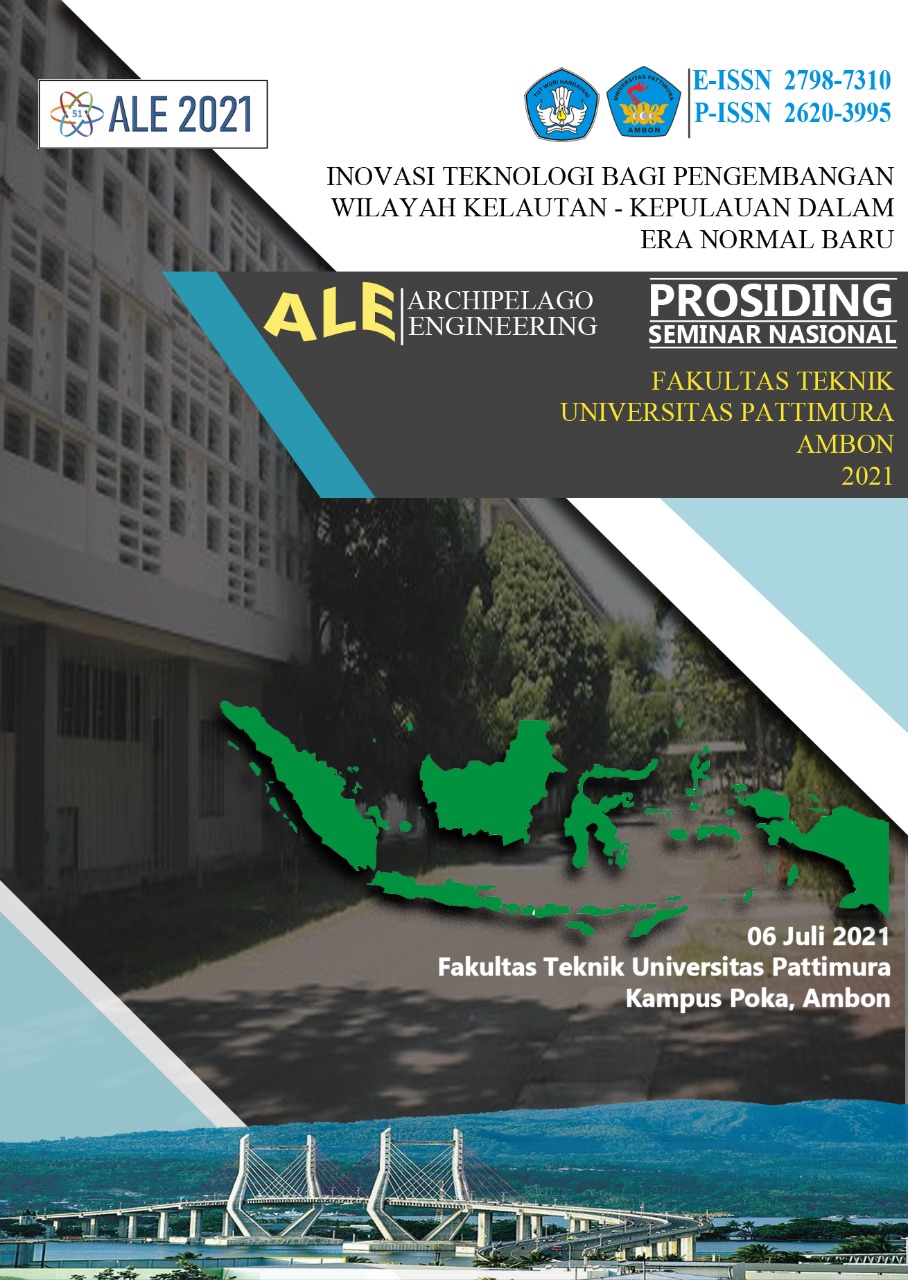PERILAKU CHAOS ALIRAN FLUIDA BERDENYUT DALAM SALURAN BERPENAMPANG SEGIEMPAT
Abstract
The pulsatile fluid flow in a transverse grooved channel would become chaotic flows in low Reynold numbers. The Reynold number where flows become chaos depends on grooves distances. The objective of this research is to analyze the effect of grooves distances on the behavior of chaos. This research was done by implementing a closed square cross-section channel, where the bottom surface of the channel was semicircle grooved. The frequency of flow oscillation measurement was done by setting up a resistance sensor that is Wheatstone bridge where the resistance sensor was located in a U manometer. Measurement was done at several Reynold number. From the research result, it is seen that the periodic fluid flows in the transverse grooved channel had become chaos at Reynold number Re 950 in the channel without grooved and at Reynold number Re 700 in the grooved channel. Chaos took placed since a vortex appeared at every treatment.
Downloads
References
[2] Ueda, T., Chaotic Dynamics and Its Application in Mechanical Engineering, Collaboration Workshop on Energy, Environment, and New Trend in Mechanical Engineering, Brawijaya University, 159-174, 2004.
[3] Tufillaro N.B. et. al., An Experimental
Aproach to Non Linear Dynamics and Chaos, Addison Wesley, 1992.
[4] Adhaci, T. and Uehara, H., Linear Stability Analisys of Flow in a Periodically Grooved Channel, International Journal for Numerical Methods in Fluids (41), 601-613, 2003.
[5] Nishimura, T., Morega, A.M. and Kunitsugu, K., Vortex Structure and Fluid Mixing in Pulsatile Flow Through Periodically Grooved Channels at Low Reynold Numbers, JSME International Journal Series B, Vol. 40, No. 3, 377-385, 1997.
[6] Wardana, I. N. G., Chaos in Fluid Mechanics for Energy Conservation, Collaboration Workshop on Energy, Environment, and New Trend in Mechanical Engineering, Brawijaya University, 175-192, 2004.
[7] Williams, G. P., Chaos Theory Tamed, Joseph Henry Press, Washington, D. C., 1997.
[8] Campbell, D. K., Nonlinear Science, from Paradigms to Practicalities, Los Alamos Science Special Issue, 218-262, 1987.
[9] Hassani, S., Mathematical Methods for Student of Physics And Relations Fields, Springer, Illinois, USA, 2008.
[10] White, F. M., Viscous Fluid Flow, Second edition, McGraw-Hill, Inc, 1991.
[11] Raishingania, M.D., Fluid Dynamics (With Hydrodynamics) Fourth revised edition, S. Chand & Company LTD. New Delhi, 2002.
[12] Nishimura, T., Yoshinaka, M., and Kunitsugu, K., Oscillatory Momentum Transport and Fluid Mixing in Grooved Channels for Pulsatile Flow, Department of Mechanical Engineering, Yamaguchi University, Ube, 755-8611, Japan, 2001.
[13] Gloerfelt, X.; Bogey, Ch.; Bailly, Ch. and Juve, D., Aerodynamic Noise Induced by Laminar and Turbulent Boundary Layer Over Rectangular Cavities, American Institute of Aeronautics and Astronautics, 2476, 2002.
Copyright (c) 2021 Prayitno Ciptoadi, Mesak F. Noya, Gertruida S. Norimarna

This work is licensed under a Creative Commons Attribution-ShareAlike 4.0 International License.
An author who publishes in the ALE Proceeding agrees to the following terms:
- Author retains the copyright and grants ALE Proceeding the right of first publication of the work simultaneously licensed under the Creative Commons Attribution-ShareAlike 4.0 License that allows others to share the work with an acknowledgment of the work's authorship and initial publication in this journal.
- Author is able to enter into separate, additional contractual arrangements for the non-exclusive distribution of the journal's published version of the work (e.g., post it to an institutional repository or publish it in a book) with the acknowledgment of its initial publication in this journal.
- Author is permitted and encouraged to post his/her work online (e.g., in institutional repositories or on their website) prior to and during the submission process, as it can lead to productive exchanges, as well as earlier and greater citation of the published work (See The Effect of Open Access).
Read more about the Creative Commons Attribution-ShareAlike 4.0 Licence here: https://creativecommons.org/licenses/by-sa/4.0/.






